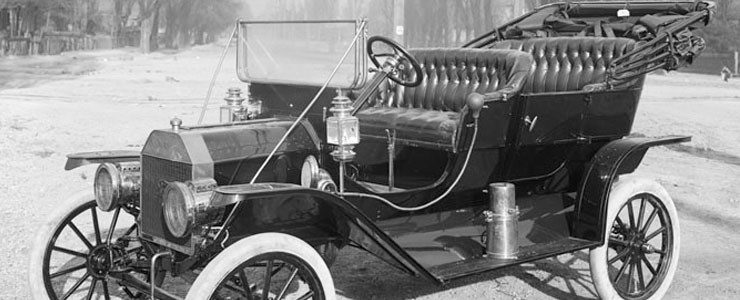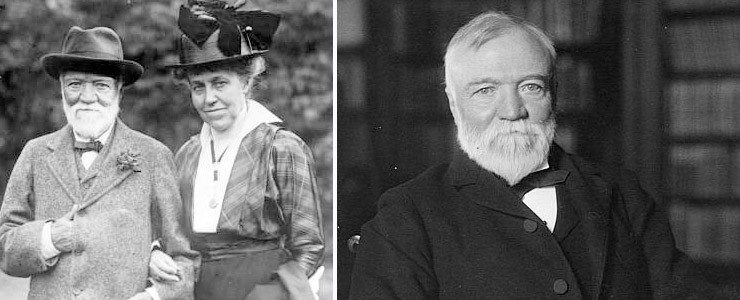
The business magnate who changed lives: Henry Ford
The pioneering business magnate Henry Ford changed the lives of millions of workers across the world by introducing the assembly line for vehicle production – a method still used in car manufacturing today.
He made the first cars that were practical and affordable, thanks to his mass production techniques, featuring a moving line that made its debut in 1913. His methods of vehicle manufacture were adopted by industry during the first half of the 20th century and set the standards for production line technology.
He founded his own company, Ford, on 16th June 1903, in Michigan, Detroit. Using innovative ideas that had never before been seen in the manufacturing industry, he increased wages for the workforce, lowered costs and introduced a franchise system of dealerships throughout America and in cities across six continents.
Child prodigy
It was no surprise that Ford grew into a captain of industry, since in his youth, he had been something of a child prodigy. Born in July 1863 in Greenfield Township, Michigan, Henry was the oldest child of six siblings born to William and Mary Ford, who were wealthy farm owners.
At school, he showed an avid interest in the workings of anything mechanical and by the time he was 12, he had kitted out a small machine shop at home, where he began to build a steam engine. He had completed it by the time he was 15 and was labelled a genius.
After his father gave him a pocket watch, he taught himself how to take it apart and reassemble it, leading to a side-line in repairing watches for family, friends and neighbours from his workshop. He left home in 1879 at the age of 16 to move to Detroit, where he found work as an apprentice machinist for James F Flower and Brothers’ machine shop.
First vehicle
At the age of 18, Ford went on to work for Detroit Dry Dock Company in 1881, where he learned about heavy industry. He mastered the operation of his parents’ Westinghouse portable steam engine at the family farm, gaining a superior knowledge of the engine, which lead to his employment servicing steam engines for Westinghouse.
In 1888, he married Clara Bryant and began running a sawmill. At the same time, he began learning bookkeeping at college, as he had always had a good head for business. In 1891, he found work as an engineer at Edison Illuminating Company in Detroit, where he was soon promoted to chief engineer.
His favourite pastime remained tinkering with machinery and while working at Edison’s, he devoted his spare time to experimenting with internal combustion engines. In 1896, he designed his first vehicle, the Ford Quadricycle, which had its first test drive on 4th June.
It was a simple vehicle comprising a frame with four bicycle wheels attached and an ethanol-powered engine. He continued to modify and improve it from the workshop at his home on 58 Bagley Avenue, Detroit. He took it on many test drives, selling his first vehicle to Charles Ainsley for $200 in 1896.
However, the “horseless carriage”, as it was commonly known, was hand-built and expensive. Cars were a plaything for the rich, and out of reach for ordinary working-class people.
Ford Motors
The success of his Quadricycle led to Ford founding the Henry Ford Company (later to become the Ford Motor Company) in 1903. Ford’s dream of producing a car that was reliable, reasonably priced and efficient was finally realised five years later, when he produced the Model T.
Its introduction was the start of a new era in automobiles and they were no longer just for the very rich. The Model T was a big success with consumers when the first model was released on 1st October 1908. The evolution of mass production began in 1913, when Ford designed his first moving assembly line.
This revolutionised the manufacture of his famous Model T. The assembly line at his Ford works in Highland Park, Michigan, was the first in the world, but the process was adopted by other industries throughout the world and mass production of many items began in earnest, thanks to Henry Ford.
It was a simple idea that allowed Ford to produce a large number of cars to a simple design at a low cost. Ford said his aim was to “put the world on wheels.” He certainly succeeded by producing an affordable vehicle for the public, no matter what their social standing.
Ford today
His foresight made Ford one of the richest people in the world. Large-scale vehicle manufacturing operations saw him employ an industrial-strength workforce, working efficiently on the moving assembly lines.
He was able to pay them decent wages, keeping employee satisfaction high. This resulted in high productivity, as his management skills kept the automobile plant running efficiently.
The Ford brand expanded to become one of the largest vehicle manufacturers in the world in the 20th century. Ford acquired subsidiaries in the UK, including Jaguar, Volvo and Land Rover.
Today, Ford’s dominance of the automobile industry continues, with plants all over the world, including Brazil, Australia, Japan, Thailand, Taiwan, Turkey and Russia. Ford manufactures more than 5.5 million vehicles each year and employs around 213,000 people at 90 plants worldwide. With a global revenue of more than $118 billion, it is America’s second-largest auto manufacturer.
Whether you’re a small enterprise or a global entity, everyone needs the best office facilities to run a successful business. Headspace Group specialises in flexible workspaces – we’re here to serve your needs, with workspaces that look and feel good, thus benefitting the productivity in your business.
For further details of our services, please give us a call on 020 3691 7500.



